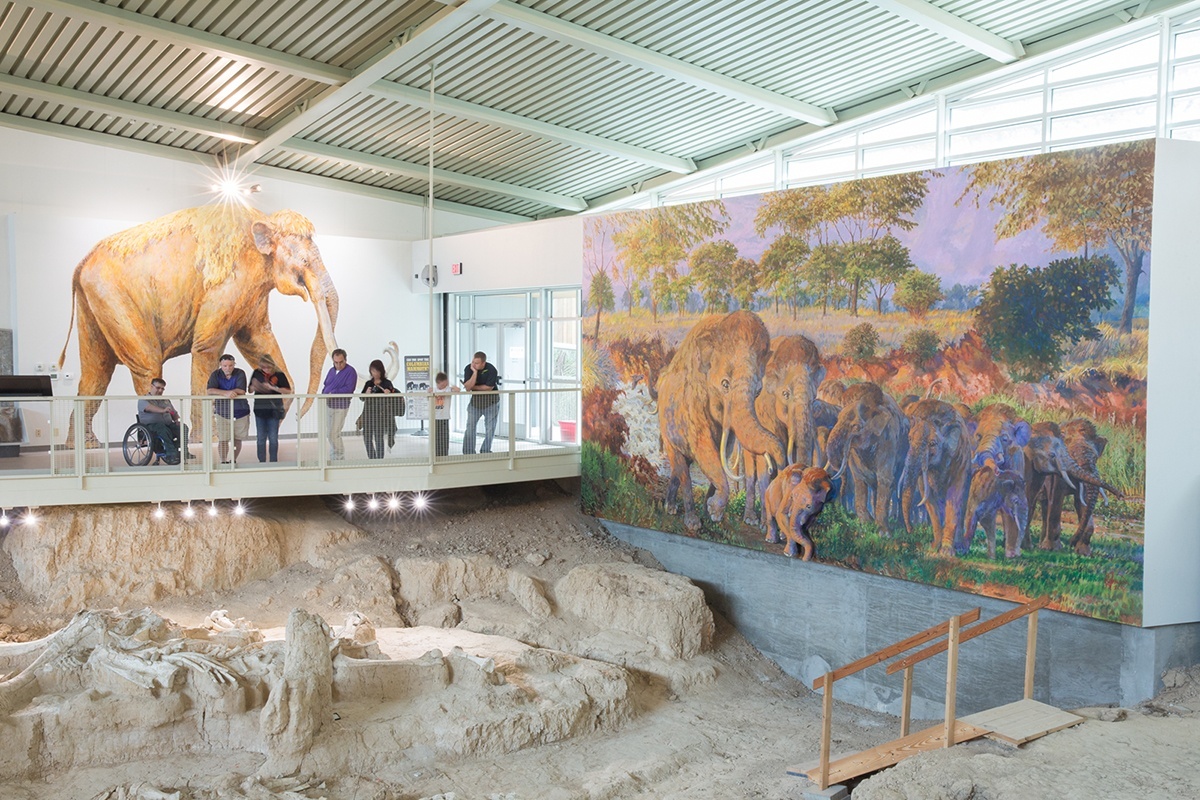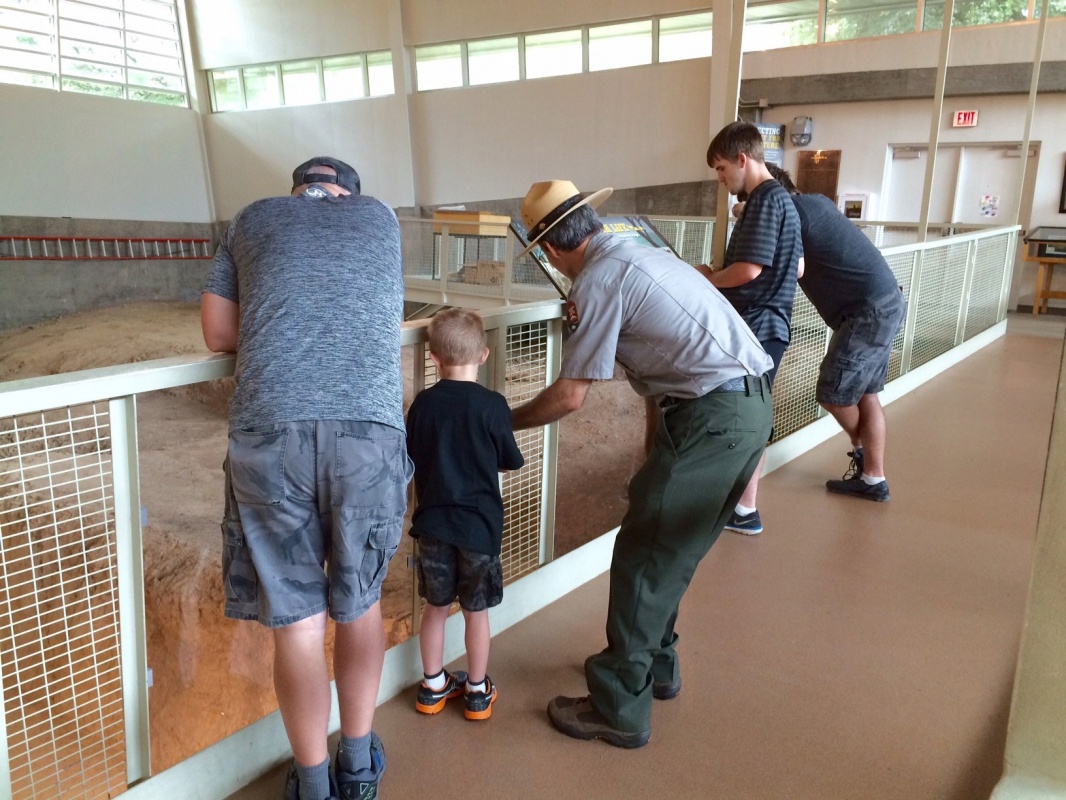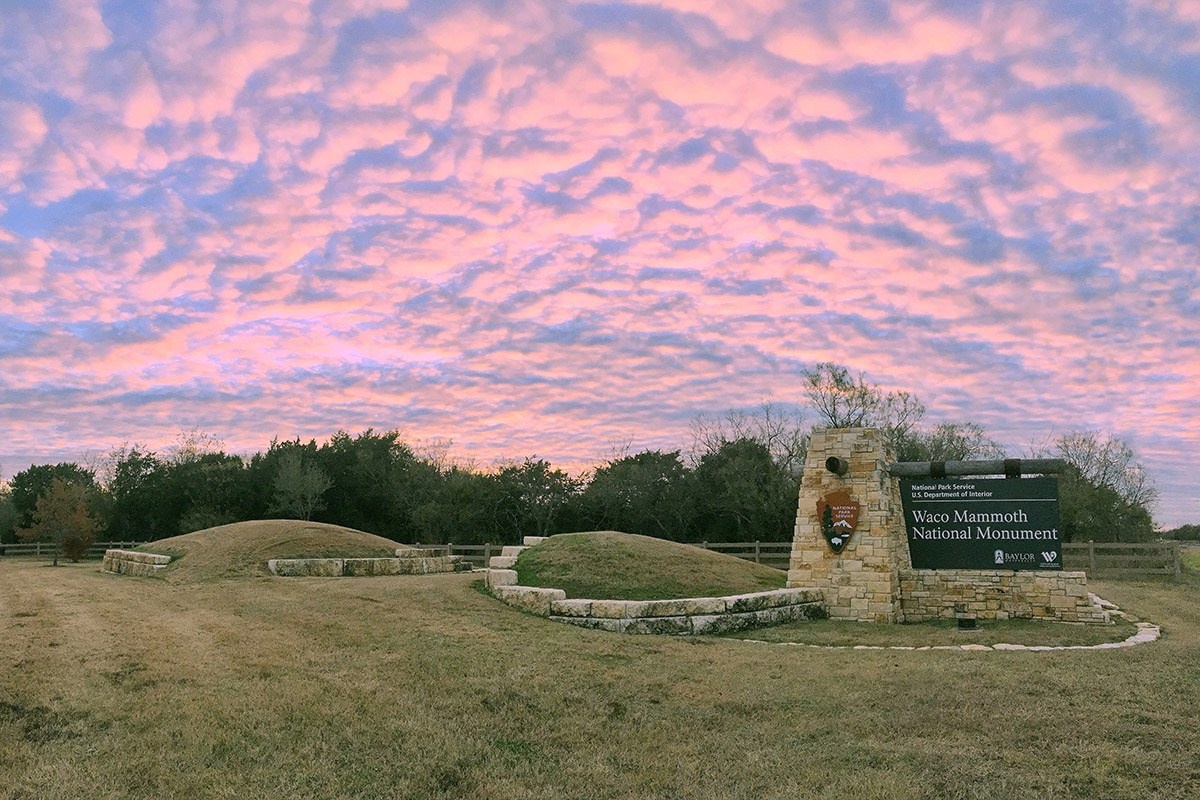The woodlands along the Bosque River on the outskirts of Waco long obscured an astonishing paleontological discovery: partially fossilized remains of a nursery herd of Pleistocene mammoths.
The wooded land that covered the mammoths is cut by ravines washed out by periodic floodwaters. In 1978, in one of these ravines, two fossil collectors unearthed an enormous bone.
The bone was identified by scientists at Baylor University as the femur of a Columbian mammoth. Baylor quickly organized a team and began excavation of the site. A centimeter at a time over the next 30 years, Baylor scientists exposed a glimpse of life during an ice age in Central Texas, identifying the bones of 23 Columbian mammoths, a prehistoric camel and the tooth of a juvenile saber-toothed cat in an area now known as Waco Mammoth National Monument.
Unlike other similar discoveries, the bones of the Waco mammoths have not completed the fossilization process by which minerals gradually replace the organic material of the bones and transform them into a stonelike solid. “They are extremely fragile,” says Anita Benedict, collections manager of Baylor’s Mayborn Museum. “Before bones were removed from the site, they had to be stabilized inside plaster jackets.”
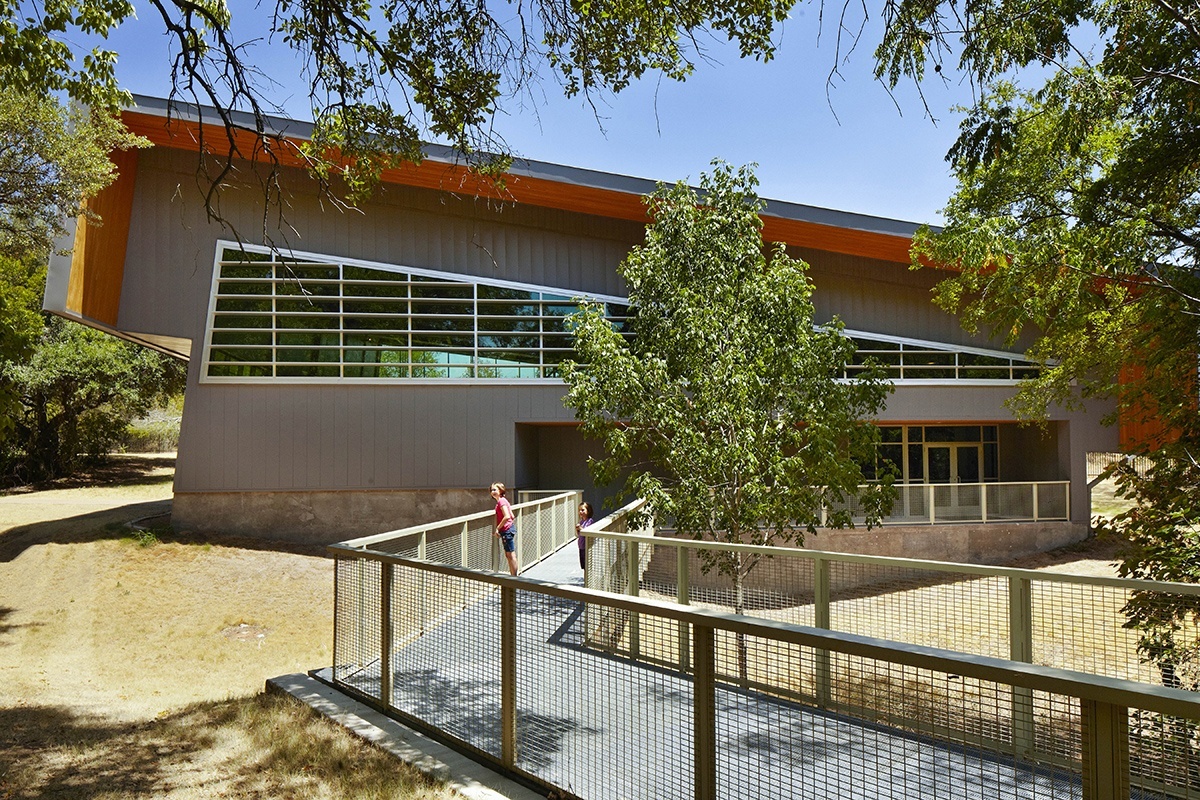
Web Extra: Waco Mammoth is just north of Waco’s Cameron Park, near the point where the Bosque River joins the Brazos River.
Courtesy City of Waco Parks and Recreation
The skeletons of the animals that made up the original nursery herd, a group that included females and juveniles of all ages, are now housed at the Mayborn.
How the animals died is still a mystery. Early scientific evidence pointed to a catastrophic flood about 65,000 years ago that trapped mammoths from the nursery herd in a steep, slippery-sided channel where they drowned. Sediment from later floods buried the remains.
More recent studies suggest that the mammoths did not all die at once but rather in a series of events over many years. A second flooding event produced an unidentified animal associated with a juvenile saber-toothed cat, and a third, approximately 15,000 years later, left behind the skeleton of a large bull mammoth, a juvenile and an adult female. These remains are still at the site.
Because the juvenile lies across the massive 16-foot tusks of the bull, early theories posited that he might have been trying to lift the calf above the floodwater. Experts doubt this. “Adult male elephants certainly never do good deeds like saving calves,” says University of Nevada anthropologist Gary Haynes, who has spent 40 years studying mammoths. “The bones of the bull and the calf at first glance seem to tell an inspiring story of failed rescue, but it is far more likely that the carcasses of the two mammoths were merely washed together after they were dead.”
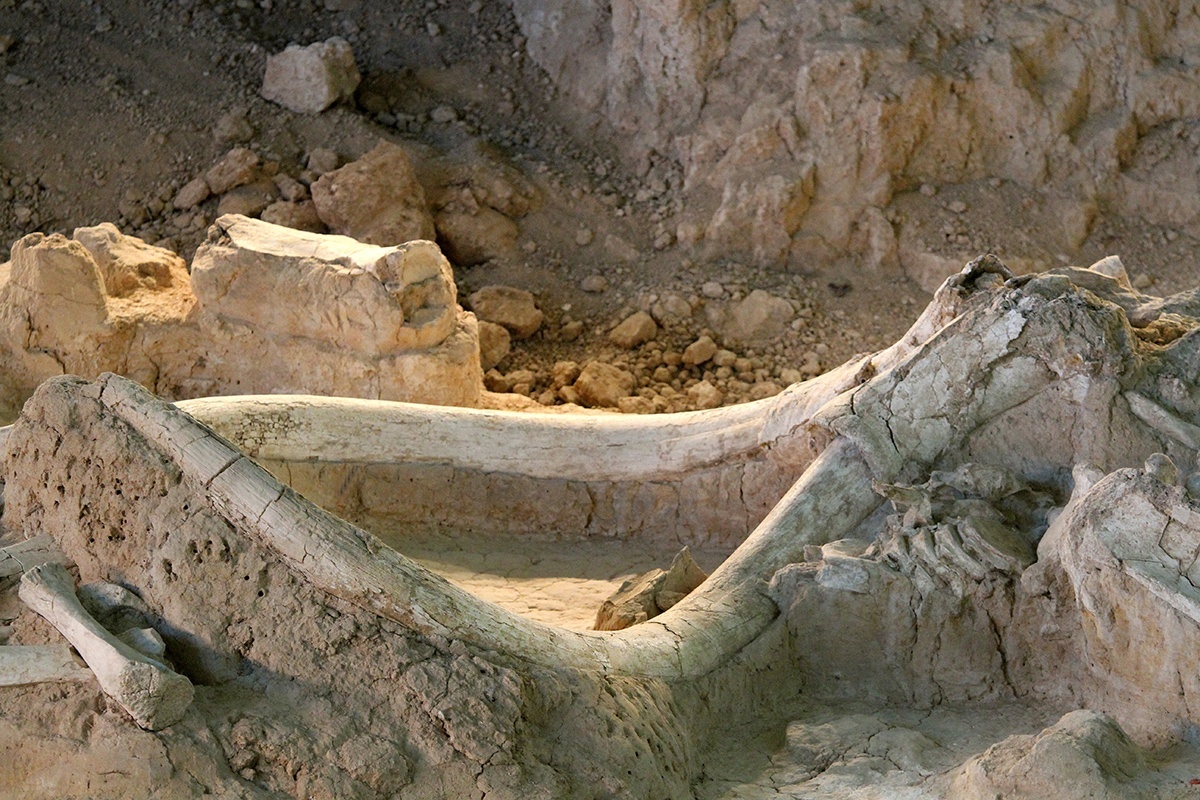
Web Extra: Waco Mammoth includes the fossil remains of 22 Columbian mammoths, along with other animals, and a tooth from a saber-toothed cat.
Courtesy City of Waco Parks and Recreation
The Brazos and Bosque rivers converge northwest of downtown Waco, and some experts speculate that a drought may have drawn the large number of mammoths to the plentiful water of the Waco area, where flash floods led to their deaths. Or could it have been a poisonous algae bloom? The jury is still out.
A life-size mural of a Columbian bull mammoth inside the door of the $3.5 million pavilion that houses the original dig site provides visitors with a dramatic view of the creatures. Dwarfing their distant cousins, the smaller woolly mammoths, Columbian mammoths grew to a height of 14 feet at the shoulder and weighed 8–10 tons. They lived in the temperate grasslands of the southern United States, Mexico and Central America. A warmer climate may mean that they had less hair than the woollies, which occupied colder northern regions. The discovery of bits of bone in the soil when holes were drilled for the pavilion indicates that other skeletons may still rest below the surface.
The site in Waco opened to the public near the end of 2009, and in 2015, President Barack Obama signed an executive order that made it a national monument and part of the National Park Service. Guided tours of Waco Mammoth National Monument are offered every 30 minutes, 9 a.m.–5 p.m., seven days a week.
Martha Deeringer, a member of Heart of Texas EC, lives near McGregor.
